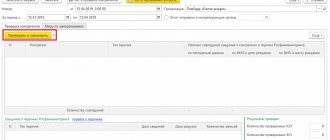Rosfinmonitoring Letter No. 50, which we recently wrote about, continues to raise questions among those involved in working with precious metals and jewelry.
At our request Pavel Smyslo , an expert on combating money laundering and the financing of terrorism, explained the essence of this letter and what jewelers and entrepreneurs really should pay attention to.
Pavel Smyslov
On February 10, 2016, the “Anniversary” information letter of Rosfinmonitoring No. 50 was published.
The letter is addressed to jewelry organizations and entrepreneurs. With his help, the authorized body clarified the issues of application of legislation in the field of AML/CFT. ( Editor's note: The acronym AML/CFT is used to shorten the phrase “ anti -money laundering and anti - terrorism financing ” ).
The release of the letter was expected, since we heard about plans for its release back in early 2014. Although the letter did not become a sensation among the expert and jewelry community, we nevertheless very much welcome its release and publication.
What is the point of the letter?
The letter did not in any way change the law, as some might believe. It simply stated long-known facts regarding the application by jewelers of the norms of Federal Law No. 115 of 08/07/2001.
This is why we would caution organizations against trying to make a big deal out of the date of this letter.
Some jewelers considered that “commission agreements need to be “monitored” only from February 10, 2016, that is, after the letter was issued.” However, let us recall that commission agreements should have been “monitored” a long time ago. This was evidenced by the position of Rosfinmonitoring, which it set out in the Information Notice dated 03/26/2010 “Typical questions on the application of certain norms of the Federal Law of 08/07/2001 N 115-FZ “On combating the legalization (laundering) of proceeds from crime and the financing of terrorism” , and broad examples of administrative law enforcement practice. I told listeners about this many times at targeted briefings and seminars on AML/CFT.
The huge role of this letter lies in the fact that it is aimed at creating uniform practices by supervisory authorities and jewelers in matters of providing information to Rosfinmonitoring. The absence of an official written position of Rosfinmonitoring on these issues led in practice to the fact that jewelers tried to play it safe and send as many messages as possible to the authorized body, even in cases where this was not necessary. All so that they are not accused by GIPN employees of incomplete reporting, with the subsequent imposition of a multi-thousand-dollar fine on the organization and the official.
How to work with a current account correctly
If an organization or individual entrepreneur wants to avoid suspicion of committing illegal transactions, the Central Bank recommends following a few simple rules.
Inform the bank about all changes in a timely manner
When changing the general director, location or OKVED codes, or approving a new version of the charter, it is not enough to inform the tax office about this. New data should also be provided to the bank, and if necessary, make appropriate changes to the signature card and obtain a new digital signature. Then he will not have questions about why another person signs payment documents instead of the person indicated in the Unified State Register of Legal Entities, or why the design studio receives payment for cleaning services.
Similarly, an individual entrepreneur must report a change in place of residence or actual business conduct.
Monitor the accuracy of the information in the Unified State Register of Legal Entities or Unified State Register of Individual Entrepreneurs
The tax authority has the right to independently exclude an organization from the Unified State Register of Legal Entities, and an individual entrepreneur from the Unified State Register of Legal Entities.
The reason for the exclusion of a legal entity may be not only the actual termination of activities, but also the provision of false information. Most often, the location of the organization is checked, so the Unified State Register of Legal Entities should always indicate the address where it is actually located.
An individual entrepreneur can be excluded from the Unified State Register of Individual Entrepreneurs even for filing a tax return late.
Fill out payment orders in detail
The more detailed the purpose of the payment is reflected, the fewer questions the bank will have. First of all, you need to indicate what the money is being transferred for. Additionally, the details of all documents on the basis of which the transfer is made are indicated.
The standard set includes an agreement, an invoice and a document. However, the absence of any of them is not so significant if it can be explained by the terms of the transaction. For example, an invoice for payment includes an offer or an agreement provides for an advance.
Don't split up your business
Creating several organizations or registering individual entrepreneurs for several people can be a legal way to reduce tax payments. However, attention to such schemes is increasing every year. Recognizing a tax benefit as unjustified will lead not only to problems with the bank, but also to additional taxes, penalties and fines.
In the area of special attention are groups of interdependent companies and individual entrepreneurs whose total revenue exceeds the limits under special tax regimes.
Pay your taxes on time
The inability of an organization or individual entrepreneur to pay taxes on time in the presence of a permanent income calls into question not only the efficiency of using the money received. It seems quite logical to pose the question that the organization was created with fictitious goals and will later be abandoned as unnecessary.
The Central Bank recommends that the share of tax payments from the current account be no less than 0.9% of the debit turnover.
What should you pay special attention to?
Literally in a nutshell, we want to remind organizations and entrepreneurs in the jewelry sector of some of the points of the “anniversary” letter and the main rules for submitting reports to Rosfinmonitoring.
The full list of transactions subject to mandatory control is established by Article 6 of the Federal Law of August 7, 2001 No. 115 “On combating the legalization (laundering) of proceeds from crime and the financing of terrorism.”
to mandatory control if the amount for which it is performed is
- equals or exceeds 600,000 rubles
- or equal to an amount in foreign currency equivalent to 600,000 rubles,
- or exceeds it (the so-called “threshold value”), and at the same time, by its nature, this operation refers to one of the types of operations listed in Article 6 of the mentioned law.
Financial monitoring: Five main AML/CFT violations committed by jewelers
The coronavirus pandemic brought not only difficulties to jewelers, but also relief: for example, the interregional departments of the Federal Assay Chamber did not carry out supervisory measures in relation to the industry. The AML/CFT inspections of jewelers that we have encountered recently were initiated only by the prosecutor's office and were not of a mass nature. However, this situation will not last long, because someday the coronavirus will no longer pose as many threats as it does now, life will return to its previous course, and at the same time, AML/CFT checks will return to their usual rhythm. Although we even fully admit that the resumed inspections may be more widespread, and therefore it is better to prepare for them in advance. Our professional work as consultants and lawyers in the jewelry industry has allowed us to identify a number of typical and most widespread violations that jewelers commit in their work. We even managed to compile something like a rating of the main AML/CFT violations, which today we would like to share with our readers.
1. Absence of internal control rules for AML/CFT purposes at jewelers, their non-compliance with the requirements of the current legislation on AML/CFT, violation of the established deadline for updating internal control rules in accordance with the amendments made to Federal Law No. 115-FZ, and other regulations in area of AML/CFT.
The lion's share of all violations that inspectors identify during supervisory activities is precisely this violation. It can unconditionally be placed in first place in our ranking.
Surprisingly, among jewelers there are always those who hear about internal control rules for the first time, only after receiving a request from the supervisory authority to submit them for inspection. These are mainly jewelers who have recently decided to engage in activities in the industry, but are not yet familiar with the regulatory requirements for AML/CFT.
Those jewelers who have AML/CFT regulations in place often submit for verification documents that contain errors, inaccuracies and shortcomings, as well as provisions based on outdated legislation. This circumstance is due to the fact that jewelers pay insufficient attention to the responsibility for developing internal control rules, use templates for this document, or turn to non-professionals to prepare the rules.
A very common situation is when a jeweler uploads internal control rules to his personal account on the Rosfinmonitoring website, but there is no feedback from inspectors on this fact: this inspires the jeweler and gives him reason to believe that his document is completely correct. However, it is known that uploading internal control rules to your personal account only records their presence, but does not reliably indicate that the rules were read or verified by supervisory authorities. Uploading rules to the Financial Monitoring website does not guarantee that during a real and full inspection of the rules of internal control, they will be approved by the inspectors.
Representatives of supervisory authorities make the bulk of their comments to the identification program, the transaction detection program, the risk assessment program, and other sections of the ICR.
We would like to draw the attention of our readers to the fact that in 2022 there were already sufficient reasons to adjust the internal control rules. Therefore, the ICs approved back in 2022 will definitely not pass assay inspections.
2. Violation of requirements related to training and education of personnel for AML/CFT purposes.
Training is a very weak link in the AML/CFT system of many jewelers, and it ranks second in the ranking of the main violations of NFOs.
If jewelers more or less cope with the obligation to regularly undergo external training on AML/CFT in training centers, then with such forms of training as introductory and additional instructions on AML/CFT, the situation is much worse. Jewelers forget to provide training to newly hired employees and do not carefully monitor the updating of the regulatory framework and the entry into force of regulations in the field of AML/CFT, on which additional training is carried out. Jewelers also forget to document the facts of instruction.
It is not that uncommon for a jeweler to violate the deadlines for completing targeted training, especially by a special AML/CFT official. Let us recall that training in the form of targeted instruction must be completed by a person planning to perform the functions of a special official before his appointment to the position.
Here, without separating it into a separate category, we note the violation of jewelers associated with the non-compliance of the special official responsible for the implementation of the rules of armed conflict with the qualification requirements established by the Government of the Russian Federation.
3. Failure to submit or submission to Rosfinmonitoring of incomplete and unreliable information and information provided for by Federal Law No. 115-FZ, violation of the deadlines and procedure for submitting information.
Submitting reports to Rosfinmonitoring is the most important responsibility of jewelers, but not all of them cope with it. The number of violations committed when fulfilling this duty is very significant, and in our ranking of errors and violations among jewelers, we put it in third place.
Due to the specific nature of their activities, jewelers rarely encounter reports of cases of freezing (blocking) clients’ property and money, suspension of operations and cases of refusals. But jewelers constantly encounter reports on mandatory control operations and reports on the results of customer inspections in their work, but they make a number of typical mistakes in them both due to ordinary inattention when drawing up formalized electronic messages, and due to their insufficient knowledge of the Rosfinmonitoring Order dated August 27, 2015 No. 261 “On approval of the description of formats of formalized electronic messages...”.
Jewelers often make mistakes in the numbering of messages, in calculating the amount of transactions, in the types of transactions (with property or funds), the distribution of roles of participants in transactions, and the details of the basis documents.
Jewelers make many mistakes in indicating the number of clients when forming a FES on the results of client verification. So, for example, among the jewelers’ clients there were no persons involved in extremist activities or terrorism, the proliferation of weapons of mass destruction, but for some reason the jewelers fill in the FES field “total number of clients - legal entities, individual entrepreneurs and individuals, in relation to in which measures to freeze (block) funds or other property that were subject to application in accordance with the Federal Law for the period under review were not applied.”
4. Fourth place in the list of violations can be safely given to the work of jewelers with internal messages. Inspection activities by supervisory authorities often demonstrate a fairly common violation among jewelers: the absence of compiled internal reports on information sent to Rosfinmonitoring, or their formal preparation without taking into account the established requirements.
Let us remind you that organizations and entrepreneurs sending formalized electronic messages about suspicious transactions and mandatory control operations to Rosfinmonitoring are required to document the information sent, incl. by composing internal messages.
The procedure for documenting information, which is part of the ICR for AML/CFT, must provide for the preparation by employees of subjects of 115-FZ, who have identified an operation (transaction) subject to control, of an internal message - a document containing information about the operation established by Government Decree dated June 30, 2012 No. 667 .
For internal messages compiled on mandatory control operations, the following simple rules apply:
– for each FES submitted to Rosfinmonitoring, an internal message must be drawn up in the organization;
– the number of internal messages should not be less than the number of FES about mandatory control operations.
Internal reporting plays a huge role in identifying suspicious transactions, because It is in it that jewelers must record their reasoned justifications for recognizing the operation as suspicious and sending information about it to Rosfinmonitoring.
Unfortunately, often the justification for such a decision by jewelers is not recorded in detail in internal messages, and the motives that guided them in recognizing a transaction as suspicious are not disclosed, which indicates a formal approach to working with suspicious transactions.
An internal message is an internal document of an organization or entrepreneur; it is not necessary to send it to Rosfinmonitoring or supervisory authorities on its own initiative, however, this document is often requested for inspection by supervisory authorities.
The absence of internal messages and a formal attitude towards them almost always indicates irregularities in the work of the organization and the entrepreneur, and in some cases may indicate possible risks of involvement of the subject of 115-FZ in laundering criminal proceeds or financing of terrorism.
5. Violations in identifying the client, his representative, beneficiary, beneficial owner, as well as assessing the degree (level) of risk of clients.
This violation, which we put in fifth place, closes our current ranking.
Despite the fact that many jewelers have every opportunity to carry out complete and correct identification, they often perform this duty with numerous violations.
Thus, jewelers forget to establish information about clients’ beneficiaries and formally assign clients to different risk levels without any justification. Jewelers have poor procedures for updating identification information, as well as checking passports for validity.
Jewelers do not always record in customer profiles information about the results of checking the presence (absence) of information regarding the client about his involvement in extremist activities or terrorism, the proliferation of weapons of mass destruction.
And some jewelers do not draw up any AML/CFT questionnaires at all: for example, some retail jewelry sellers do not bother asking for passports of individual clients and filling out personal data, and jewelry suppliers are limited to only compiling their internal counterparty questionnaires for legal entities, which, let us remind you, have nothing to do with real customer identification procedures.
Of course, there are many other violations in the activities of jewelers, which can also be divided into separate groups and categories - we will definitely tell our readers about them in the following articles.
In conclusion, however, we note that sometimes it seems to us that over the past few years, jewelers have already learned a lot (including through publications in our magazine and courses on financial monitoring taken by the author of this article) and are less and less likely to repeat the mistakes that were widespread in the past. Therefore, we hope that someday the time will come when the identification of violations in the activities of jewelers will be considered an exception to the rule and will not be a whole topic to be covered on the pages of this magazine.
Reports to Rosfinmonitoring
Who submits reports to Rosfinmonitoring and under what agreements, the most common in the jewelry industry?
Reports are submitted:
- Under the purchase and sale (supply) agreement for jewelry. The reports are submitted by the Seller (Supplier) of jewelry. The buyer does not report
- jewelry commission agreement The reports are submitted by the Commission Agent (the one who took the goods on commission). The consignor (the one who gave the goods for sale) does not report
- Under an agency agreement. The reports are submitted by the Agent. The Principal (the one who instructed the Agent to complete a transaction on his behalf) does not report
- According to the contract . The Contractor submits reports if during production he used not only the Customer’s raw materials, but also his own raw materials (for example, precious stones, metal, and so on). The report is also submitted if the Contractor receives part of the manufactured products as payment from the Customer. The customer does not report under the contract. If the production is made exclusively from the Customer’s material, the report is not submitted by either the Customer or the Contractor.
We also remind you that the following transactions for 600,000 rubles or more (performed one-time or cumulatively within the framework of one agreement) are subject to mandatory control separately:
- supplies
- payment
- returns
When a business transaction may raise suspicion
Suspicion may be raised by:
- inconsistency of the transaction with the statutory goals of the organization;
- lack of obvious economic meaning;
- confusing or unusual nature of the operation;
- splitting a large amount into several small transfers;
- withdrawal of capital abroad;
- financing of “gray” imports;
- large volumes of cash withdrawals or transfers to the accounts of individuals, including individual entrepreneurs.
Typically, such transactions are tracked automatically. Robots scan payment documents and look for relevant keywords before sending. After this, the suspicious transaction is checked by a bank employee.
Where to read letter No. 50 of Rosfinmonitoring
The “anniversary” letter is written quite succinctly, in detail, in accessible language, and therefore does not require our additional comments to it. This letter is truly the case when it is easier to read it once yourself than to hear about it a hundred times from others. Moreover, you can always do this using these links:
fedsfm.ru/news/1960 (official website of Rosfinmonitoring);
smyslovy.ru/uveliry_pod_ft.html (website of the Interregional Educational and Consulting Legal Center for Financial Monitoring (IKPTsFM).
I strongly recommend that all jewelers be sure to read Rosfinmonitoring Information Letter No. 50 and use it in their daily work.
Details and consultations
If you would like to learn more about the issues of submitting information to Rosfinmonitoring, we recommend that you take training at the Interregional Training and Consulting Legal Center for Financial Monitoring MUKPTsFM (link above).
You can ask questions to the author of this article, financial monitoring expert Pavel Smyslov, on the pages of his group “Rosfinmonitoring and AML/CFT” on the VKontakte social network vk.com/smyslovy. The group is closed from prying eyes, but is open to anyone who needs answers to questions on AML/CFT.
You can also ask questions to Pavel Smyslov on the jewelers forum uvelir.net.
About the author of the article
Smyslov P.A., AML/CFT expert, lawyer, candidate of historical sciences, founder of the Interregional Educational and Consulting Legal Center for Financial Monitoring (MUKPTsFM), www.smyslovy.ru.
How the bank fights illegal transactions
First of all, the bank may refuse to perform a transaction on the account. If suspicions arise regarding a specific transaction, information about it is sent to Rosfinmonitoring.
At the same time, the bank cannot interfere with the client’s business activities as a whole. It can only stop a specific transfer, and also refuse remote service.
A more effective, and therefore exceptional, measure of punishment is termination of the service contract. It can only be used if the client has been denied an operation two or more times during the year, and the grounds for the refusal have not been eliminated.










